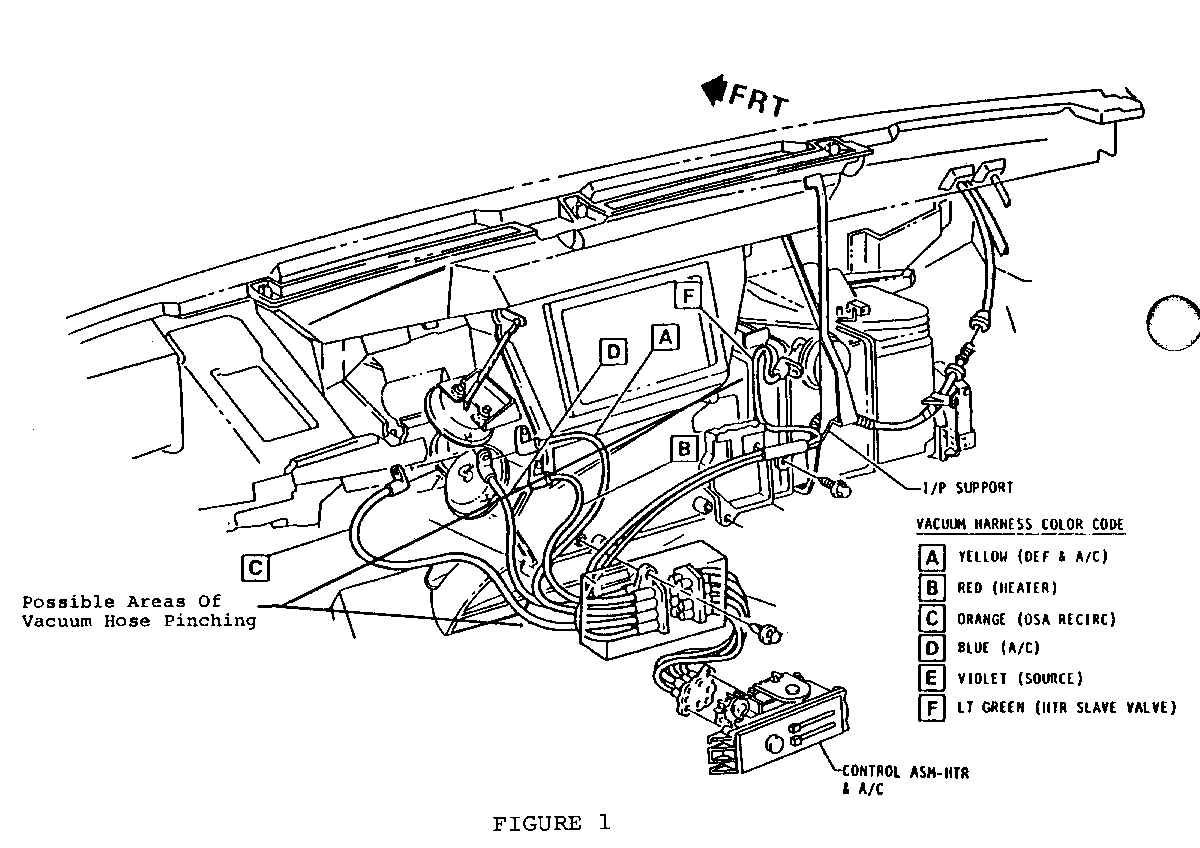LITTLE OR NO HEAT DIAGNOSIS AND REPAIR

LITTLE OR NO HEAT 1987 OR 1988 BONNEVILLE
MODELS AFFECTED 1987-1988 BONNEVILLE --------------- Condition: Little or no heat in some 1987 or 1988 Bonnevilles
Cause: The condition may be due to an incorrectly positioned Max Heat Door (Heater slave door) caused by pinched and or improperly routed vacuum line.
Diagnosis:
Temperature Lever Test
1. Position the heat selector lever in the heat position. 2. Turn the blower on hi position. 3. Move the temperature lever to full hot. 4. Observe the air flow from the floor vents while moving the temperature lever to full cold.
Airflow decreases when lever is moved to full cold.
System is functioning normally and max heat door is okay. Check coolant levels and for proper engine operating temperature.
Airflow increases when lever is moved to full cold.
Max heat door is improperly positioned. Refer to Figure 1.
1. Remove radio and inspect vacuum harness connectors located just below and slightly to the left of the rear of the radio (see Fig.1). The light green vacuum hose makes a 120 degree turn and could be kinked. Correct as necessary. Rerun temperature lever test.
2. If the vacuum hose routing is okay, or the condition still exists, remove the glove box and inspect the routing of the light green vacuum hose from the vacuum harness connector to the Max Heat Door (Heater Slave Door) for pinching. Rerun temperature lever test.
3. If the condition still exists apply 10" Hg. Vacuum to Max Heat Vacuum (Heater Slave Valve). Rerun temperature lever test. If the conditions still exist, the situation is internal in the heater either a door is binding or vacuum motor defective.

General Motors bulletins are intended for use by professional technicians, not a "do-it-yourselfer". They are written to inform those technicians of conditions that may occur on some vehicles, or to provide information that could assist in the proper service of a vehicle. Properly trained technicians have the equipment, tools, safety instructions and know-how to do a job properly and safely. If a condition is described, do not assume that the bulletin applies to your vehicle, or that your vehicle will have that condition. See a General Motors dealer servicing your brand of General Motors vehicle for information on whether your vehicle may benefit from the information.
